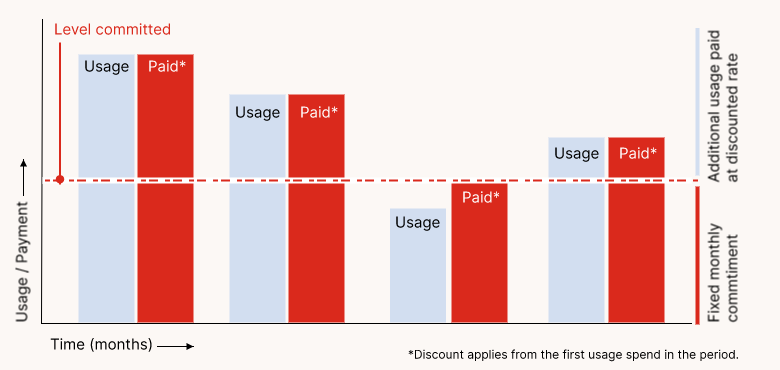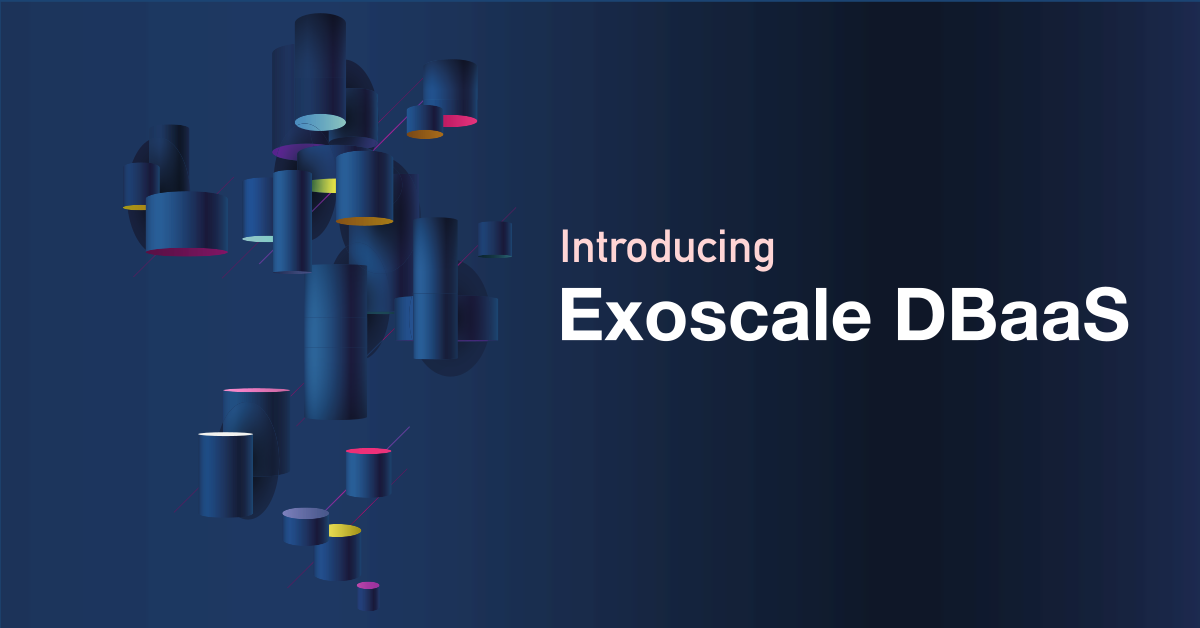Companies are steadily shifting their IT infrastructure to a cloud environment. Finding the right cloud provider often proves a challenge for companies. Not only because of GDPR considerations, but also because of pricing options and costs. If customers start digging into the different options for pricing or try to compare prices, they will soon get caught in a jungle of different models. Reserved instances, spot instances, preemptible instances, volume discounts, on-demand – all those are possibilities at cloud providers. Some more complex, some easier to use.
We will go into the details of every single pricing model, to clarify the options and highlight the simplest and most predictive solution for cloud infrastructure.
Cloud Computing Pricing Models – An Overview
Cloud providers offer different options for their customers in terms of pricing. The most common pricing models at cloud providers are:
- On-demand pricing
- Spot pricing
- Preemptible pricing
- Reserved instance pricing
- Volume discounts or tier based pricing
With all these options companies can leverage different levels of cost savings. Especially with spot instances and reserved instances cost savings can be up to 90% as advertized on with some vendors. But the cost savings with those two strategies come with a major drawback: loss of flexibility.
The inherent flexibility customers achieve by using cloud infrastructure is traded off for the costs if reserved or spot pricing is used, to a point where it can be difficult to call it Cloud Computing still. NIST Cloud Computing definition makes “on-demand” and “measured” essential attributes of the service
In order to better understand the pros and cons of each strategy we will go into detail about the above mentioned four.
On-demand Pricing
On-demand or pay-per-use pricing is the simplest and mostly the default option at cloud providers. Customers pay exactly what they use. However, not all on-demand pricing modes are created equal. On the fine lines of the pricing options, the granularity can vary drastically from one provider to another. Almost all are billed with an hourly unit, with some charging for full hours - every hour started is due - and others with down to the minute or second. While most are converging to minute or second granularity, some still have minimum billing periods of first 5-minutes for example. At Exoscale, instance pricing is based on an hourly rate with per second granularity and no minimum billing period.
Instances are available as needed; they are easily scaled up and down according to the requirements. On-demand does not require long-term commitments. In conclusion, this option offers the highest flexibility but is also the most expensive one. It is recommended for running applications that may spike periodically or are not to be interrupted.
Pros & Cons of on-demand pricing |
|
|---|---|
| Pros | Cons |
| No long-term commitment | Most expensive |
| High flexibility | |
| Simple to manage | |
| Pay only what you use | |
Some providers will charge a minimum for on-demand, a first minute or 5 minutes, up to an hour in some cases. So on-demand might not always be the exact per second charge.
Spot Pricing
Spot pricing or instances are basically an auction-based system. Customers bid for instances and as soon as the market price drops below the bid, the instance is “bought” at the market price (not the bidding price). This means that this type of pricing needs a lot of supervision, and the bidder needs to wait for the market price to reach the bid.
Spot instances are therefore incompatible with urgent workloads. Also, the provider does not commit to users, meaning that he can terminate the instance any time. If the market price exceeds the bidding price again, customers also lose the spot instance. Spot is a highly unpredictable way for important workloads, as users only receive information of the termination on a short note.
This option is possible for workloads that are fault-tolerant and flexible or are non-critical workloads like test environments. Spot should never be used on its own, it is mostly a combination with on-demand instances required.
Pros & Cons of spot pricing |
|
|---|---|
| Pros | Cons |
| High potential cost savings | High level of supervision |
| Incompatible with urgent workloads | |
| Instances can be terminated any time by the provider | |
| Constant monitoring of market necessary | |
| Loss of flexibility | |
Preemptible Instance Pricing
The fact that the price of spot instances can drastically vary is a big showstopper to keep cost under control. One of the pricing models available to overcome this is called preemptible instances. In this mode, instance it is the duration of the instance and not its price that is made a variable. Instances will then have a known price per hour, usually heavily discounted, in the region of 50% or more, but can be reclaimed by the provider at any time. To make sure users design their workload and application with this in mind the instances are also short-lived and will stopped after 24 hours.
Preemptible instances are perfect for compute batches that have a fixed duration - a few minutes to a few hours - while maintaining a fixed known upfront cost.
While not yet available at Exoscale at the time of writing, reach out to us if this model is of interest to your use case as we believe it is a more elegant and predictable pricing structure.
Reserved Instance Pricing
With reserved instances customers commit in many ways. First, a commitment to a time frame, mostly between one and three years, is required. The longer the commitment, the higher the cost savings. Second, a commitment to a certain instance type and a certain zone. The discounted rate is therefore bound to the chosen instance.
The commitments lead to a high loss in flexibility. Even if potential cost savings can be leveraged with a 3-year commitment, this trade-off needs to be accounted for. The cloud market is rapidly changing, and new instance types come up frequently. Reserved instances deny customers the chance to use the newest instance types available.
Flexibility is inherent to cloud infrastructure. Resource requirements change quickly. In case an instance is not needed anymore or needs a larger or smaller one, the customer still has to pay for it with reserved instances. There is no On-demand resizing of resources as Cloud Computing instructs by definition. Some cloud providers offer the possibility to resell on marketplaces. But it is not guaranteed that some other customer will buy the instance nor that the seller will get back the same amount as has been paid upfront.
Paid upfront – this is another added level of complexity for reserved instances. Customers can choose to pay the total amount upfront or only a part of it or nothing at all. Each option saves more or less costs but also rises or lowers again the commitment.
Pros & Cons of reserved instances |
|
|---|---|
| Pros | Cons |
| High potential cost savings if customers commit for a long period. | Long-term commitment |
| High loss of flexibility | |
| Cost savings tied to a specific instance type | |
| Incompatible with pet vs. cattle predicat | |
Flexible reserved instances
To overcome the flexibility issues highlighted above, providers introduced a new instance pricing type that offers a compromise between on-demand and reserved instances often called Flexible Reserved Instances.
This pricing model, regains some of the agility that cloud computing introduced but with vastly different discount target, less than half of what is normally achieved with reserved instances with full upfront payment for 36 months, down from 60% at best to 30% in average.
Volume Discount
A volume discount is a well-designed option for customers with fixed high workloads. Customers commit to a certain minimum usage per month and receive in exchange a discounted rate. The commitment requires a minimum period of 12 months but can be enhanced further.

At Exoscale we offer the volume discount for all Exoscale products in all available zones. In contrast to reserved instances or spot instances, this option does not require supervision and enables cost predictability. Also, no hidden costs will appear on the customers bill, like additional costs for traffic. At some cloud providers this option requires upfront payments, at Exoscale we do not require any upfront payment on volume discounts.
As new instance types constantly come up, we refrain from binding the discount to specific instances or services. A technology lock-in like with reserved instances can be avoided with Exoscale volume discounts. If new instance types come up, companies can easily upgrade to a newer version within their commitment.
This pricing model is recommended for companies that have steady workloads.
Pros & Cons of volume discounts |
|
|---|---|
| Pros | Cons |
| Cost savings for high workloads | Long-term commitment |
| No technology lock-in | |
| Simple, linear pricing | |
| Cost predictability | |
| No hidden costs | |
Pricing models - from simple to complex
Simplicity is one of the core values at Exoscale. This is why we decided to offer our customers only the most transparent and easy to use pricing options for their cloud infrastructure.
The following table gives an overview of the major pros and cons of each version.
Cloud pricing models |
||||
|---|---|---|---|---|
| On-demand | Volume Discount | Reserved instances | Spot instances | |
| Simplicity | High | High | Low | Low |
| Flexibility | High | High | Very low | Low |
| Long-term Commitment | None | Yes | Yes | None |
| Cost savings | None | High | High | Very High |
| Simple to manage | Yes | Yes | No | No |
| Compatibility urgent workloads | Yes | Yes | Yes | No |
| Technology lock-in | No | No | Yes | No |
| Available at Exoscale | Yes | Yes | No | No |
At the moment we offer on-demand pricing and volume discounts. Focus on your applications, do not waste your resources on complex pricing models.
Contact our sales team to get more information on pricing options.

